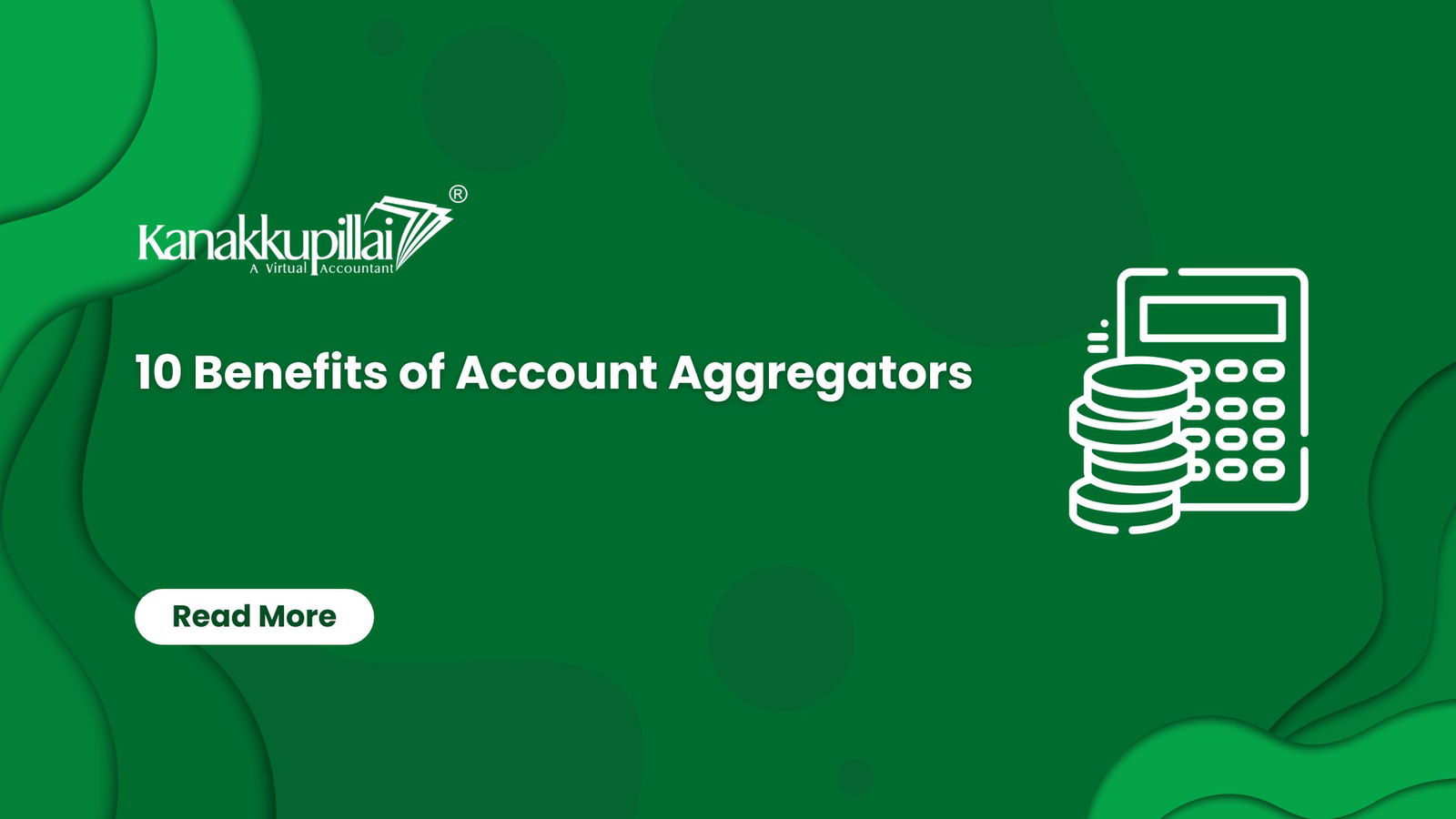Account aggregators enable you and your clients to quickly access all their assets on one platform, cutting down on paperwork while offering more services. AA will make it simpler and faster to secure credit and loans by eliminating the need to submit multiple copies of physical or scanned documents and rush through notarization and stamping processes. It will also streamline underwriting processes by providing digital verification/validation capabilities.
Benefits of Account Aggregators
1. Improved Access to Financial Data
Account Aggregators are revolutionizing the fintech landscape by offering improved access to financial data, making personalized services more available, and increasing convenience for individuals.
Account aggregation offers businesses an effective tool for increasing conversion rates by providing tailored products that meet customers’ needs. Furthermore, account aggregation enables companies to verify user identities faster while helping prevent fraud and speeding up onboarding processes.
Account aggregators (AAs) simplify financial institutions’ verification of customer identity by eliminating manual bank statement analysis. This reduces error risk and provides more accurate insights into a customer’s finances. In addition, AAs reduce transaction costs by providing more reliable data sources and reduce underwriting costs while increasing loan approval rates.
2. Increased Efficiency
Companies using data aggregation software can take advantage of verified data to save time and money. This can expedite onboarding processes while meeting compliance requirements such as Know Your Customer (KYC) and Anti Money Laundering (AML).
Account aggregation services connect to various financial institutions and gather, analyze, and display all their data in one central place for customers to see an accurate picture of their finances and make informed investment decisions. This technology represents a vast improvement from old methods for tracking accounts such as paper documents or emails; furthermore, it’s more secure as consumers only share their data after providing consent; they can withdraw it at any time if desired – offering both consumers and businesses huge benefits including new services and increased efficiency for both sides.
3. Better Customer Service
Personal financial management can be challenging when information about our finances is scattered among banks, credit cards, loans, investments, and insurance policies. Account Aggregators (AAs) provide individuals with a more straightforward solution by collecting this data into one central location for easy viewing and analysis.
Additionally, AAs can help address the credit gap by giving lenders a complete view of a customer’s financial profile. By using open banking technology to gain access to user data, AAs can speed up onboarding processes and meet KYC/AML regulations faster. This is especially valuable for small businesses with more resources available to them for fulfilling these processes. Blueleaf Advisor, for instance, uses asset aggregation as an effective way of providing their clients with a comprehensive overview of their assets for easier investment management and meeting goals more efficiently.
4. Increased Convenience
Account aggregators make managing financial data much more straightforward for their users. By simply providing login details to the software, account aggregators provide users with one central location for all their account balances and transactions, saving time, effort, and money by eliminating the need to update data manually or log into multiple accounts individually.
Aggregators also help users access credit more readily; They use reliable data from bank statements provided by an aggregator to evaluate borrower credit profiles and assess payback capacities, even with first-time borrowers.
Account Aggregators (AAs) are rapidly growing thanks to increased financial data analytics needs and the rise of fintech companies. Furthermore, this technology could revolutionize people’s finances by making it simpler and safer.
5. Improved Security
As account aggregation services become more popular, security concerns have arisen. Prioritizing data privacy and security can mitigate these concerns; API-based account aggregation ensures information is safely shared while authenticated to user banks via encrypted channels to reduce fraud and identity theft risks.
Account aggregation helps create more individualized financial products and services for users, including personal financial management tools such as budgeting tools, credit card offers, and investment recommendations.
Aggregation can also aid lenders in conducting more accurate credit assessments by providing more comprehensive and detailed information about loan applicants to lenders, leading to fairer lending practices overall and to more borrowers being granted credit loans. Furthermore, its tailored experience can build loyalty while increasing business customer retention levels, ultimately leading to higher revenue gains.
6. Increased Profitability
Aggregation allows you to provide personalized recommendations and cross-sells, leading to higher revenue. In addition, aggregation reduces manual quarterly reporting requirements, giving clients more time.
An aggregator, for instance, can authenticate and digitally transfer consumer financial data directly to banks, insurance companies, or lending agencies without sending actual funds, potentially saving consumers from having to submit bank statements so that they can qualify for loans or obtain new products.
Sharing verified data could greatly expand the addressable market for online insurers and lenders in emerging markets such as India. It would also make credit more accessible to millions of people without traditional credit histories.
7. Increased Customer Loyalty
Account aggregation gives customers access to all their financial data in one central place, making it easier to make more informed financial decisions and save time by not having to log into multiple accounts separately. Furthermore, account aggregation may lead to greater customer loyalty as companies can offer tailored services more efficiently.
AA can assist lenders in conducting an easy and fast assessment of creditworthiness by providing them with accurate data on an applicant’s finances. This can be particularly advantageous to non-bank financial companies (NBFCs), making it easier to compete with banks while increasing loan origination volumes.
Additionally, this will reduce the number of paper documents and verifications needed from people, significantly speeding up and increasing lending security. Furthermore, consumers will gain access to logs of their data transactions to withdraw access whenever required.
8. Increased Revenue
The aggregation of financial accounts allows companies to offer personalized services. It cross-sells, leading to increased revenue and customer satisfaction by giving a more unified view of finances.
Account aggregation services also use data they gather to verify consumer identities without needing access to their actual bank or credit card accounts. This enables financial institutions to both reduce fraud risks and speed up processes. In turn, lending processes may become simpler, providing access to credit for those with limited histories while creating fairer lending practices. Account aggregation’s data-driven approach reduces risk by helping lenders evaluate loan applications more accurately. At the same time, companies leveraging comprehensive user-permissions data can develop new and innovative financial products and services such as budgeting tools, lending/credit offerings, investment recommendations, and much more.
9. Better Customer Experience
Account aggregator services are an essential element of financial technology (fintech), with the power to transform the banking industry and drive innovation. By taking advantage of user-permissions data, account aggregator services enable fintechs and banks to provide personalized products and services more efficiently.
Account aggregation is easier than you think: Users register with an aggregator app and authorize it to share bank accounts, transactions, payments, and finances with other apps via APIs (application programming interfaces).
Once authorized, customers can select which data they wish to share and can change their consent at any time. Furthermore, an aggregator can verify bank balances instantly in real time to offer more personalized financial services and create a quicker, more straightforward user experience while decreasing customer abandonment during funding events.
10. Increased Efficiency
Account aggregation simplifies financial management by consolidating all accounts in one location. This saves time and effort while decreasing the chance of missing payments or incurring penalties.
The Significance of Account Aggregator Services
Account aggregators allow consumers to easily and quickly view all their financial accounts in one location, simplifying financial management and decreasing the risk of identity theft. Aggregated data can also help lenders more accurately evaluate creditworthiness, increasing access to loans for those without significant or no credit histories and creating fairer lending practices.
1. Convenience
Aggregating data provides users with a comprehensive snapshot of their overall financial profile, which is helpful when applying for products such as loans or credit cards. Additionally, this provides a platform for personalized services like investment and savings management, bill payment services, and more.
Account Aggregation allows banks to add significant value to their customers by providing automated financial updates, monitoring held-away accounts, reporting, portal experiences, and improving financial literacy through user interface/user experience interventions that enable and educate simultaneously.
Bank-provided data aggregation services can reduce risks related to reputational, transactional, and compliance-related issues inherent in third-party aggregators. Banks can mitigate these risks through strong security controls for vendor management, data gathering and use, customer education/disclosures, etc.
2. Efficiency
Traditionally, applicants were evaluated for credit eligibility by reviewing bank statements. Nowadays, however, lenders use multiple data sources to understand a new borrower’s income profile; additionally, centralized systems help assess risks and repayment capacities quickly and in real time.
An easy digital framework that facilitates the easy sharing of verified information will revolutionize the lending industry. Beyond its user-friendly dashboard and seamless experience, account aggregation will help organizations build customer trust by adhering to stringent security and privacy policies. Furthermore, this process can enable MSMEs and individuals to use it for many different purposes, including verifying identity for online transactions and accessing investment accounts, recurring deposits, loan information, and stock investments more seamlessly. It will eliminate ad hoc data transfers while making underwriting algorithms more straightforward.
3. Transparency
Account aggregators enable businesses to provide more customized services for their clients. They allow companies to offer tailored upsells/cross-sells and financial advice while helping reduce customer onboarding abandonment by making it simple for people to verify bank accounts and authorize funds transfers.
Account Aggregators (AAs) differ from traditional credit bureaus by providing user data digitally with only their explicit permission, making accessing data much simpler and safer, thus contributing to strengthening the lending ecosystem. It also ensures accurate information is shared since their sources include banks and financial institutions directly, while being verified before being shared, eliminating screen scraping, which can take time and energy.
4. Flexibility
Account aggregators provide clean data from your accounts, such as banks, credit cards, insurance policies, investment vehicles, and more. The best aggregators offer data from over 20,000 institutions via direct feeds, so your clients receive the fullest picture possible of their finances.
Screen scraping typically relies on login credentials or directly sharing one’s data, unlike an AA’s service, which only shares your information when you give your consent; plus, you can withdraw that consent at any time.
With AA, you can provide highly tailored services to your customers that foster loyalty. These can range from helping them build stronger financial profiles to making them eligible for loans without too much paperwork or documentation.
5. Security
Trusted account aggregator services are an easy, safe, and convenient way to share financial data with third parties. Consent and an encrypted channel are all necessary to share this data. At the same time, this platform enables approved entities to access your information without the need to verify documents, saving time and effort in verification processes.
These technologies enable quicker and more efficient processes, like onboarding new customers faster and complying with Know Your Customer (KYC) and Anti-Money Laundering regulations more quickly. At the same time, businesses can offer tailored products and services more efficiently. Adequate safety measures must be built into an aggregator’s IT systems to prevent unauthorized access, modification, or destruction of records or data, with end users having the ability to revoke permission at any time; additionally, this should also come equipped with comprehensive insurance coverage to protect consumers from loss.
Conclusion
Account aggregation also enables lenders to assess the creditworthiness of applicants more accurately, leading to improved financial inclusion and fairer lending practices. Account aggregation services can also simplify onboarding by verifying users using information verified by their bank, saving businesses both time and money while increasing conversion rates.





